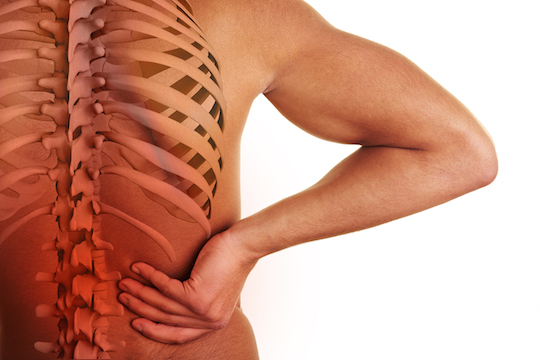Lumbar Spinal Stenosis

Lumbar spinal stenosis is classified as either central (narrowing of the spinal canal) or lateral (encroachment of the spinal nerve in the lateral recess of the spinal canal or intervertebral foramen). The majority of lateral stenosis is considered acquired and often related to degenerative changes, spondylolisthesis, post surgical scarring, or intervertebral disc herniations. Although most causes of lumbar spinal stenosis are degenerative in nature, it is not necessarily a progressive deterioration.
Interestingly, symptoms related to spinal stenosis are not directly proportional to the amount of stenosis found. In fact, many people with spinal stenosis are asymptomatic.
Common presenting symptomatology includes:
1. Unilateral or bilateral leg pain (~90% and most patients report it occurring below the knee)
2. Neurogenic claudication (~65%
and it is often poorly localized pain, paraesthesias, or cramping of one or both lower extremities bought on by walking and relieved by sitting.)
3. Symptoms worsen with extension or weight bearing, and improve with sitting, standing (with lumbar flexion), or lying down
4. Patients find it easier to walk uphill than downhill.
5. Patients will often use a walker or lean on a grocery cart to put spine into forward flexion.
6. Lower extremity sensory or motor disturbances or balance disturbances are less frequent.
Clinical findings are often minimal and nonspecific, and may not help rule in or out the diagnosis of spinal stenosis.
The following should be considered:
1. Most common finding is decreased spinal extension.
2. Decreased or absent ankle reflexes in approximately 50% of patients.
3. Reports of objective weakness vary from 23% to 51%
4. Sensory deficits in 51% of patients
5. Positive straight leg raise in approximately 50%
In light of the importance of postural and mechanical factors of spinal stenosis, lower extremity musculature should routinely be evaluated. Also, the proper exercises need to be chosen for therapeutic intervention based upon physical examination findings. Specific analysis of hip flexors and extensors should be performed for their flexibility. Reduced flexibility of the hip flexors leads to excessive anterior tilt of the pelvis and causes extension of the lumbar spine. Hip extensor weakness should be evaluated secondary to this and is recommended to be done in the prone position with the knee flexed to 90 degrees. Assessment of abdominal musculature is also very important as weakness can produce anterior pelvic tilt and a lordotic posture.
Typically, the treatment in the past has mostly been composed of surgery for people who suffer from spinal stenosis. This is starting to change slightly as more health care practitioners are recommending alternatives to surgery first. A very popular alternative is chiropractic care. A Chiropractor focuses on restoring proper joint mechanics of the spine. Often, when a vertebrae doesn’t move as well as it should (is sublimated), the end result is the the bone and surrounding tissue structures put pressure on the nerves and spinal cord exiting at the same level.
Over time, as there is lack of motion in the spine, the disc spaces between the bones start to decrease. As the discs decrease, arthritis sets in to stabilize that area, which complicates things for people who are already susceptible to spinal stenosis. A chiropractic adjustment balances out the nervous system, gets the joints moving again, and often times leads to a reduction in the symptoms experienced by spinal stenosis. Utilizing flexion-based exercise programs along with the chiropractic adjustment has also been utilized successfully.
Therapeutic exercises also need to be prescribed based upon history, physical examination findings, and the patients ability to utilize the program. This is based on co-existing factors such as cardiovascular or pulmonary disease, as well as being sure it does not exacerbate pre existing conditions.
Exercise protocols should be implemented as the following:
I. Stretching exercises
1. Hip flexor stretching
2. Hamstring stretching
3. Lumbar paraspinal stretching
II. Strengthening exercises
1. Abdominal and pelvic floor strengthening: pelvic tilt, bridges, isometric abdominal exercises
2. Gluteal strengthening: bridging, clams, side leg raises and circles
III. Conditioning exercises
1. Inclined treadmill
2. Stationary recumbent bicycle
3. Hydrotherapy (water) exercises
IV. Education in proper posture and body mechanics
Have a great weekend,
Dr. Crysta Serné
Vancouver Chiropractor and owner of Vitality Clinic
- Posted: February 7, 2015
- | by: Dr. Crysta Serne
- | Categories: Chiropractic
- | Tags: Chiropractor, Joints, Low Back Pain, Strengthening Exercises, Stretches







Leave a Reply